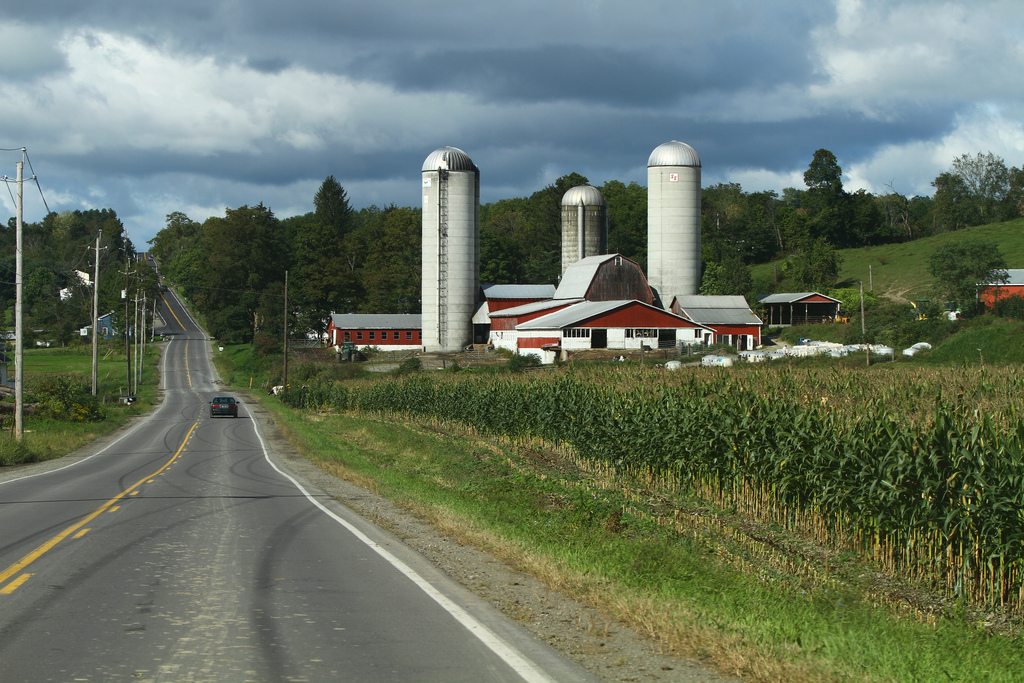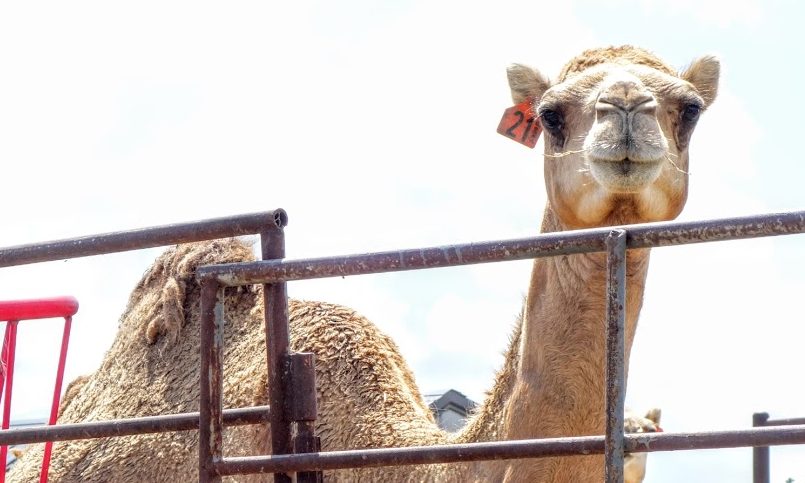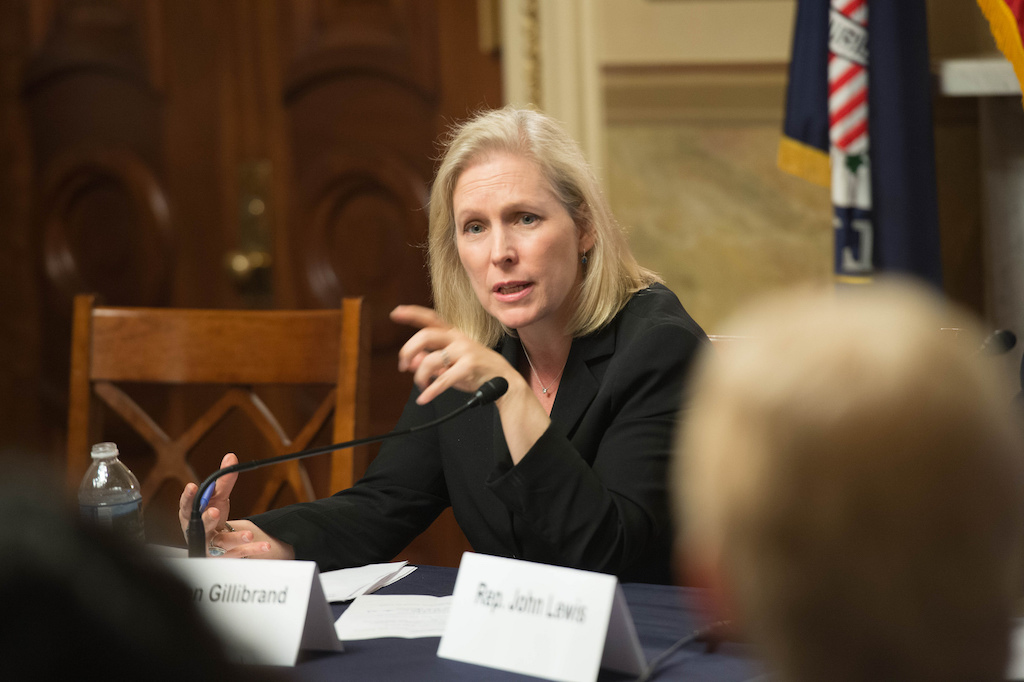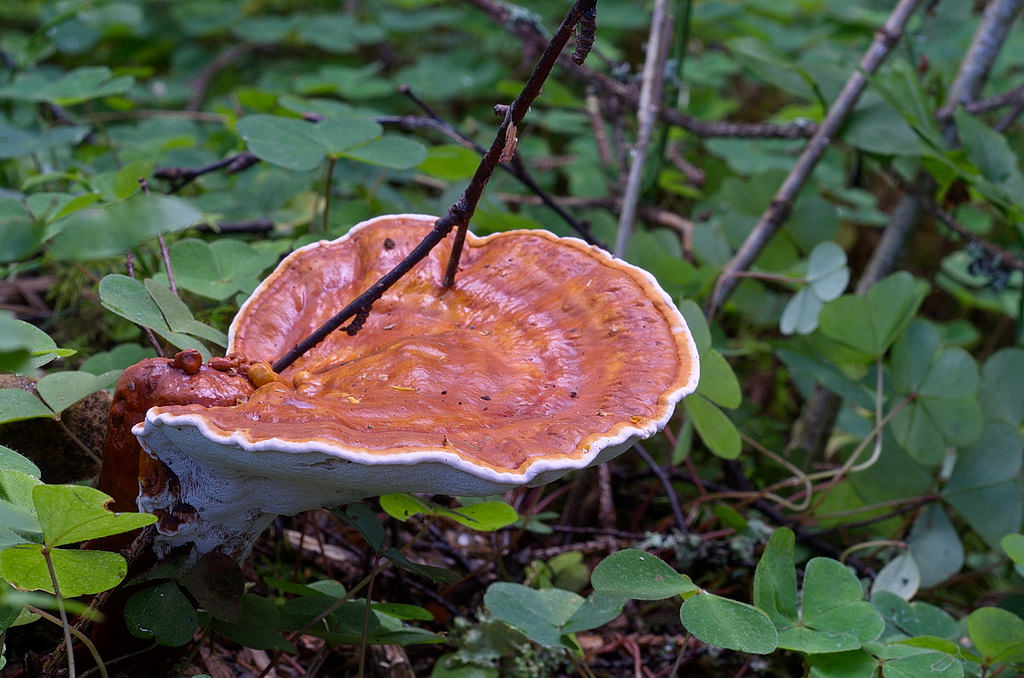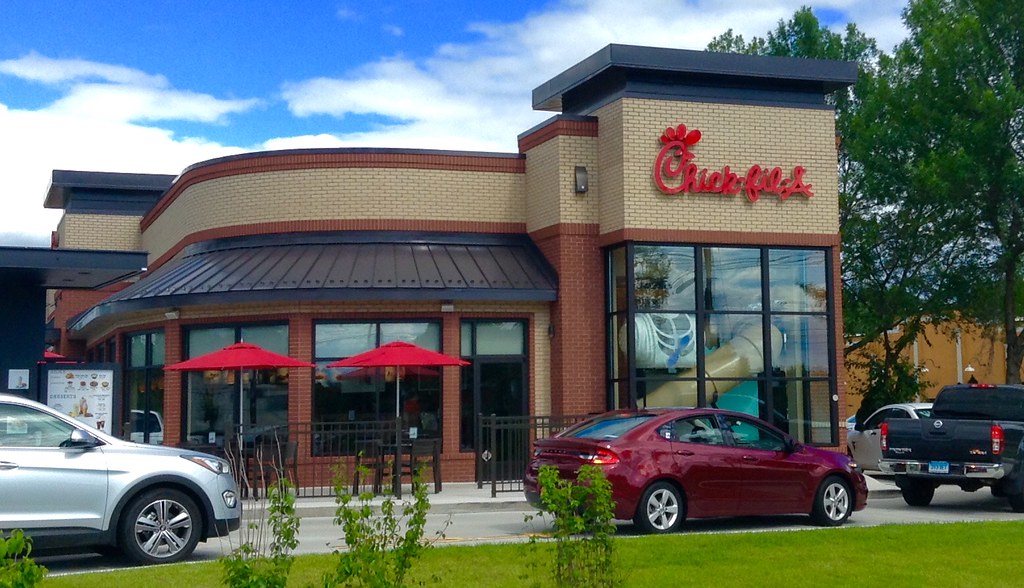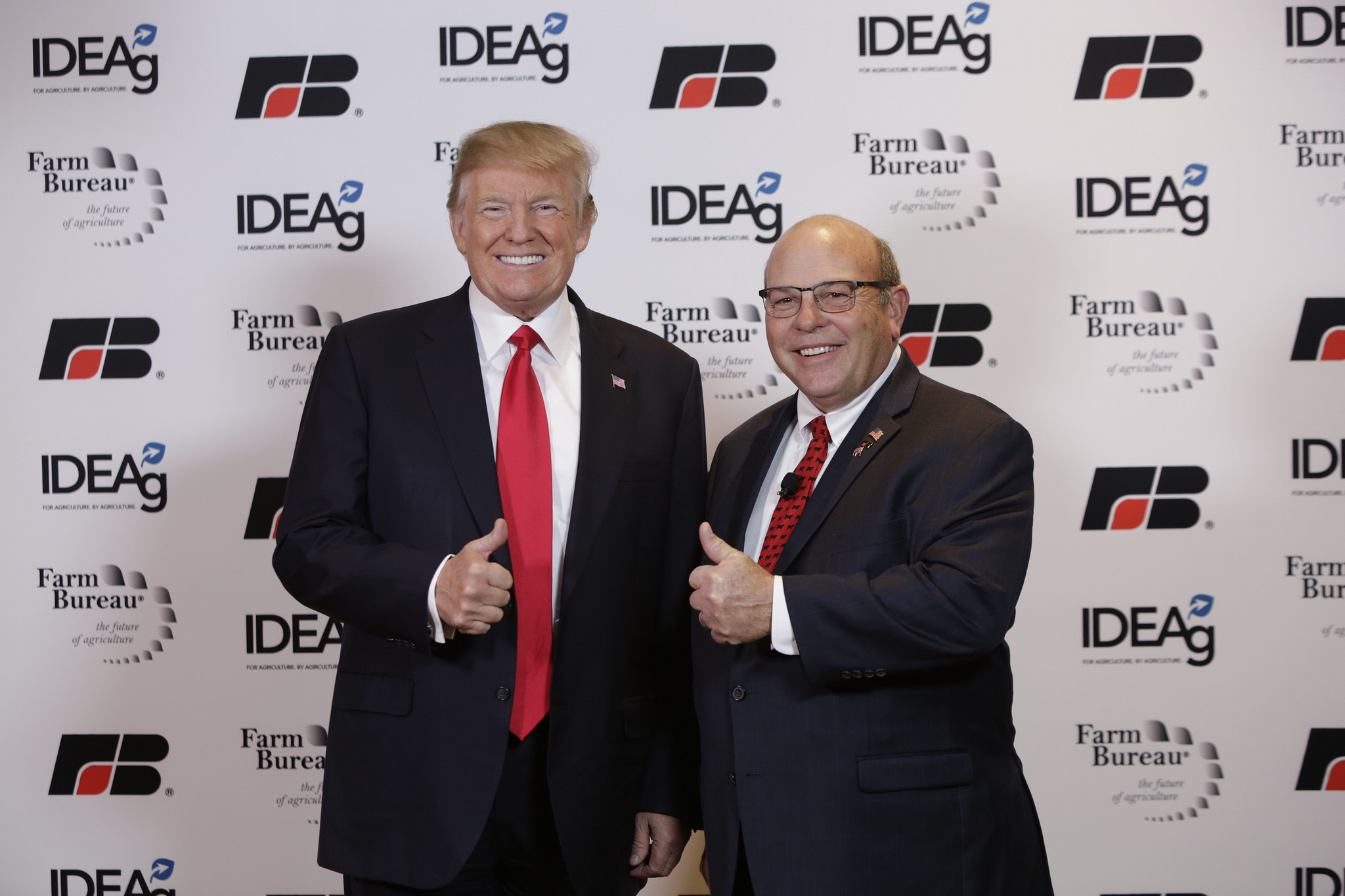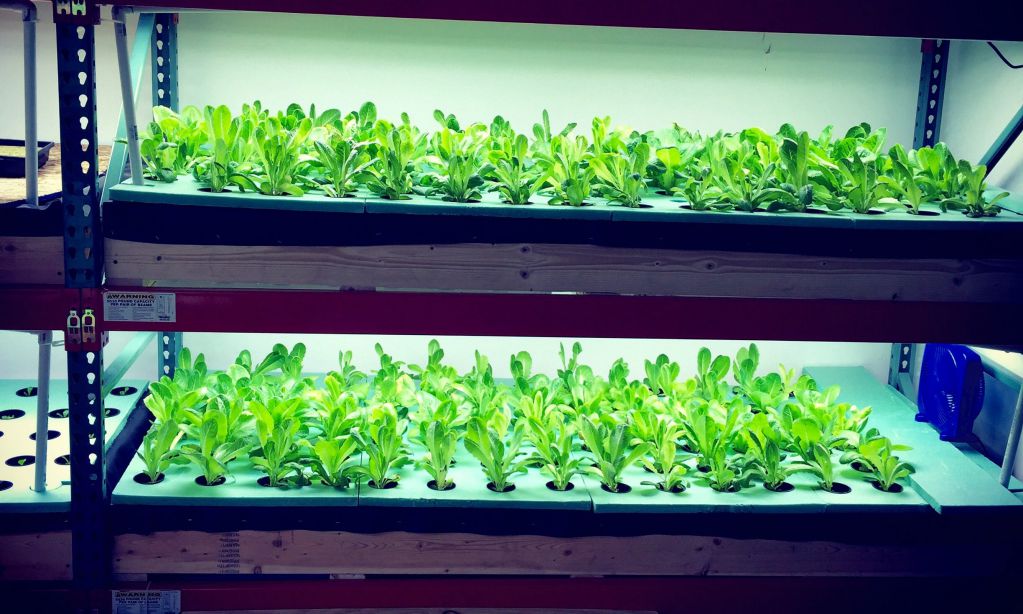
Matt Latham / Vertical Fresh Farms
Fledgling entrepreneurs hear countless variations on a theme: Start small and scale up. When Jeremy Witt and Matt Latham decided to become urban farmers in Buffalo, New York, they took the idea seriously. Their start-up operation couldn’t have been much smaller: A 250-square-foot indoor lettuce farm squeezed into their two-car garage, and knocked together with a truckload of lumber, 50 feet of PVC pipe and 18 grow lights. They figured they could make some mistakes, have some crops fail, learn what they needed to learn, and still not burn through their $20,000 startup capital.
They’d just have to find somewhere else to park Witt’s car.
Vertical Fresh Farms, as Witt and Latham named their tiny garage-based spread, got its start when Witt read about an aquaponic vertical farm in Chicago. The idea of feeding plants with nutrient-rich wastewater from fish really appealed to them, and soon they were immersed in a three-year research dive into everything from academic research papers to online chat forums.
 Vertical Fresh Farms
Vertical Fresh Farms Vertical Fresh Farms co-founders Jeremy Witt, left, and Matt Latham
In 2014 they were ready. Latham, whose wife is the sister of Witt’s wife, left his job as a logistics coordinator for a metal recycling plant in Rhode Island and moved to Buffalo, where Witt works at a software company when he’s not out in the garage tending the crops. They taught themselves a bit of carpentry and plumbing and soon had a test-size prototype of the much larger farm they hope to build—for a tiny fraction of the cost.
“We could still prove our idea and build a model,” Witt says, speaking by phone. “And we were able to take 250 square feet and create 1,000 spaces for lettuce using a three tiered system of aquaponics.”
 Matt Latham / Vertical Fresh Farms
Matt Latham / Vertical Fresh Farms Early-stage romaine crop
200 koi in the kiddie pool
For the fish portion of their aquaponic setup, Witt and Latham chose koi, an ornamental species that looks a bit like an oversized goldfish. The pair keep 200 of them in a 600-gallon Intex pool, “It’s like a backyard kiddie pool,” says Latham. At 18 months, they hope to sell koi wholesale to pet stores for about 15 bucks a pop, he explains. Tilapia, another common choice for aquaponics, sell for only a couple dollars per pound, but they grow faster and need less space than koi, he said. Latham and Witt say they may may switch, eventually.
 Matt Latham / Vertical Fresh Farms
Matt Latham / Vertical Fresh Farms Latham and Witt may switch from koi to tilapia, which need less space
For the plant portion, they went with romaine lettuce. It’s a good choice for a vegetable lab rat, says Latham, able to withstand changes in nutrients, light, and temperature. That’s a useful trait with novice farmers. It also has several advantages in Buffalo’s notoriously difficult climate. “We installed our air handler coldest day of the year, so I think the high was negative two,” he says. “Yesterday we reached 90 degrees in the city of Buffalo.”
Of the handful of harvests since growing began in March, 60 percent of lettuces reached their full, crisp potential, Witt says. He explains that the remaining romaine bolted—a precursor to flowering where the lettuce shoots up a thick stock, sprouting leaves along the way. It’s what normally happens to romaine in the fall if you leave it growing, but Witt and Latham brought it on by their experimenting.
“We started changing up too many variables in our system to kind of test some things,” Witt says. “We wanted to test lights, water levels. We wanted to test fish nutrients.”
They sold healthy heads at farmers’ markets, he says. “We couldn’t really figure out what to do with bolt heads, and so we actually give them to my uncle who has a farm to feed to his animals,” Witt says.
Eventually, a local restaurant owner who met the pair at a farmers’ market asked if they could supply fresh produce year round. “It’s not quite fine dining but the equivalent, it’s artistic food,” Witt says. So Vertical Fresh Farms diversified its portfolio. “We’re doing some basil and cilantro right now, along with spinach and wisterias,” an edible flower used mostly as a garnish.
Working out the kinks
The brothers-in-law argue that vertical farming—even smaller operations like theirs—could help drive down local food prices across the country by supplying fresh produce year-round and removing costly and unpredictable factors such as weather and the price of transportation.
“The initial idea was set up locally, in some way impact the produce market in Buffalo and from there we would like to expand to other cities,” Witt says, “possibly franchising.”
“I haven’t ventured down that road yet, but we’re beginning to attack the sales and marketing side of things now that we’ve become comfortable with our system,” Witt says.They say they plan to market to other restaurants and break into local supermarkets after they work out growing kinks in the herb and flower crops.
 Matt Latham, Vertical Fresh Farms
Matt Latham, Vertical Fresh Farms Not many farms are born in a space the size of a two-car garage
They’ll need to move out of the garage, however, if they hope to meet rising demand. So in mid-November they’ll do just that and move Vertical Fresh into a 2,500-square-foot warehouse, roughly nine times the current growing capacity, with additional office space and food-processing areas.
“It doesn’t have a retail front so you gotta figure out quickly how to sell this stuff,” Witt says. He adds that they hope to have huge crops (comparative to the garage, at least) by November, and they’re hoping—and looking—for distribution deals to put in place by then.
Witt says some people view vertical farming as a way to feed a ballooning global population, others as a means to make a buck. “We figured, ‘Hey, why not do both?’”

